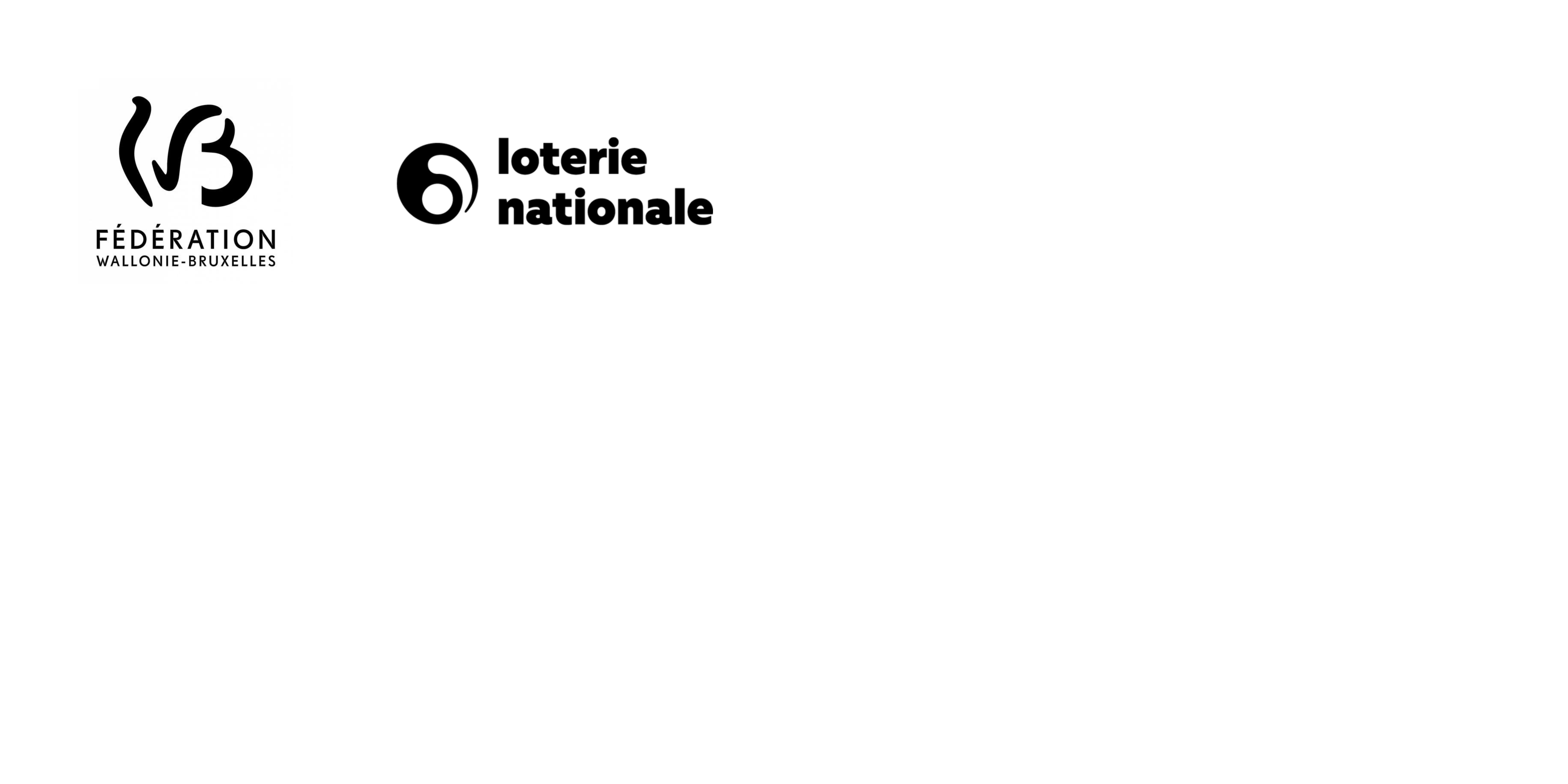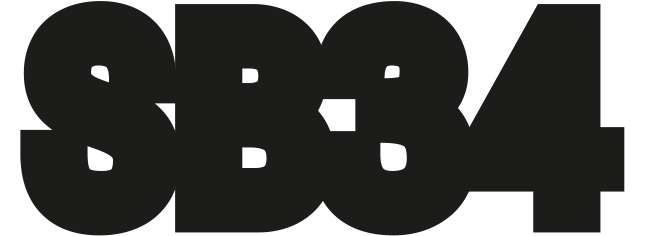
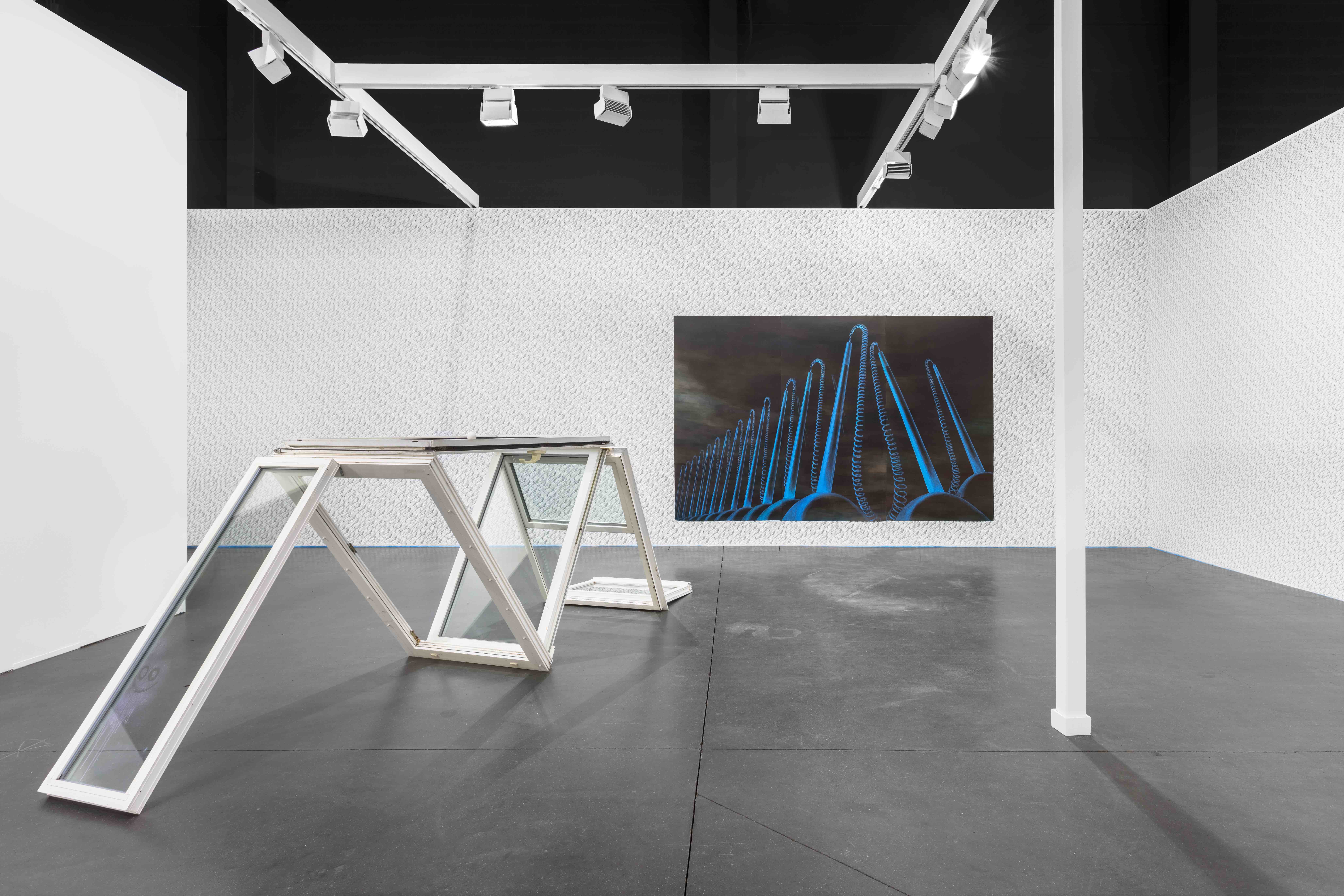
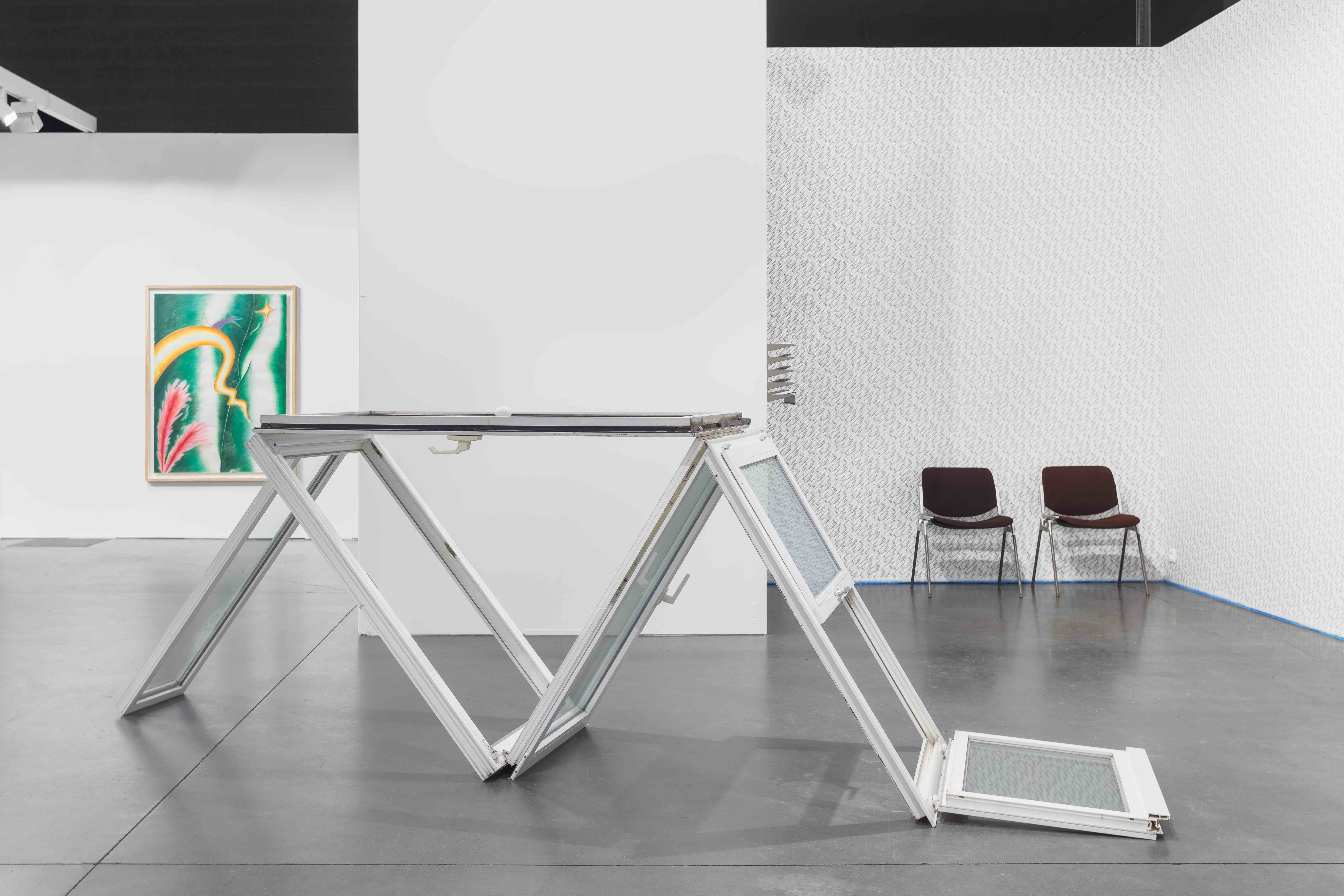
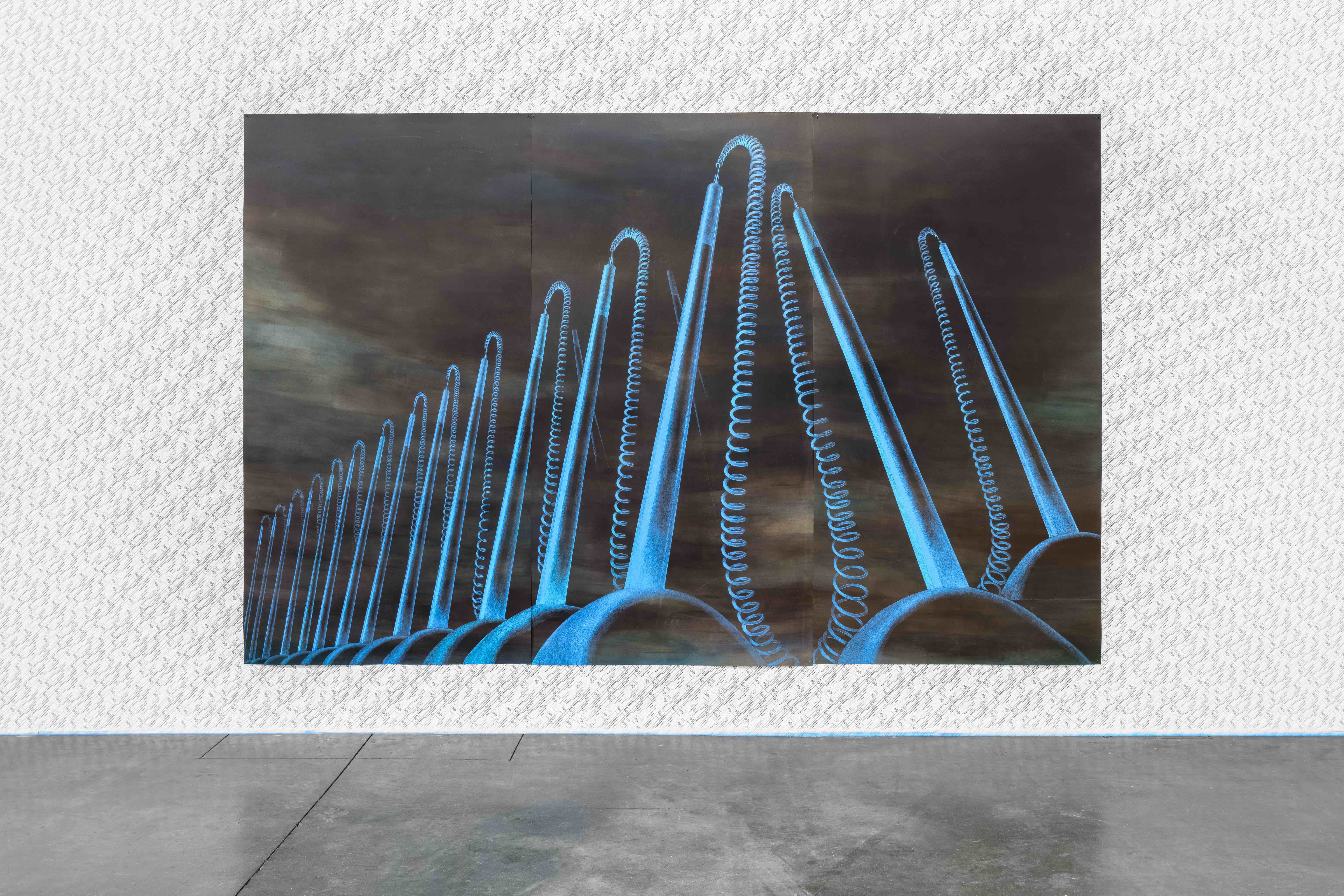
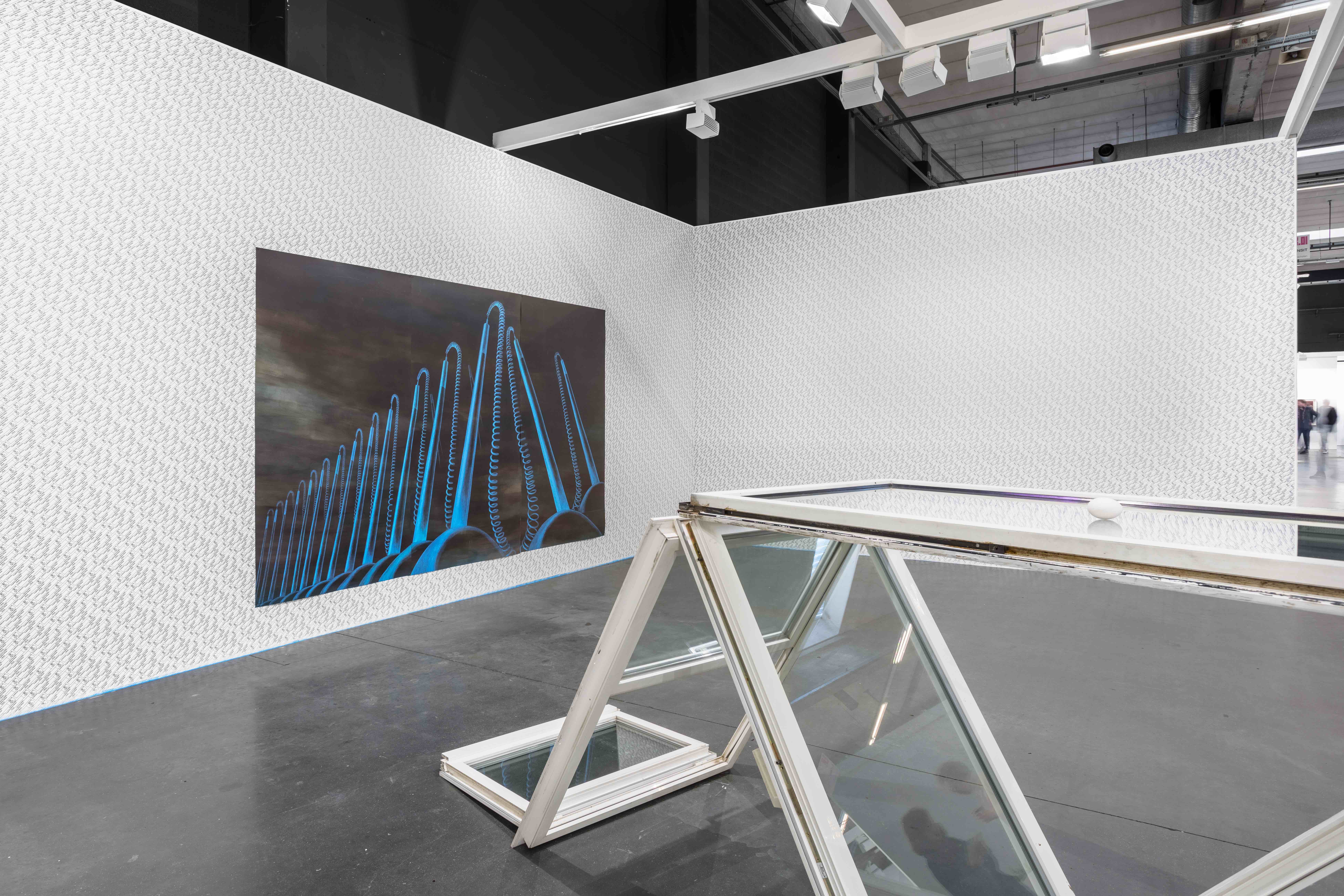
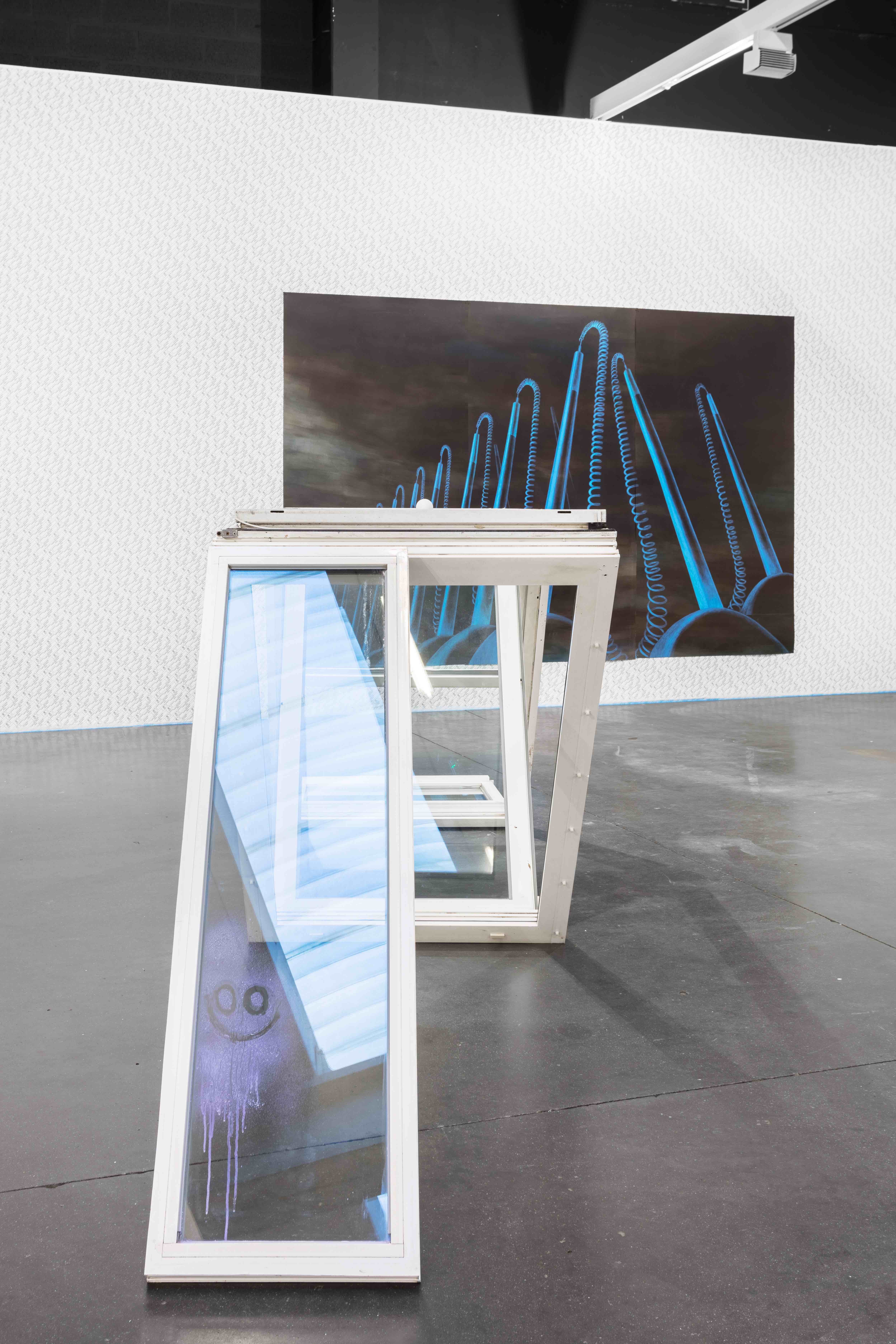
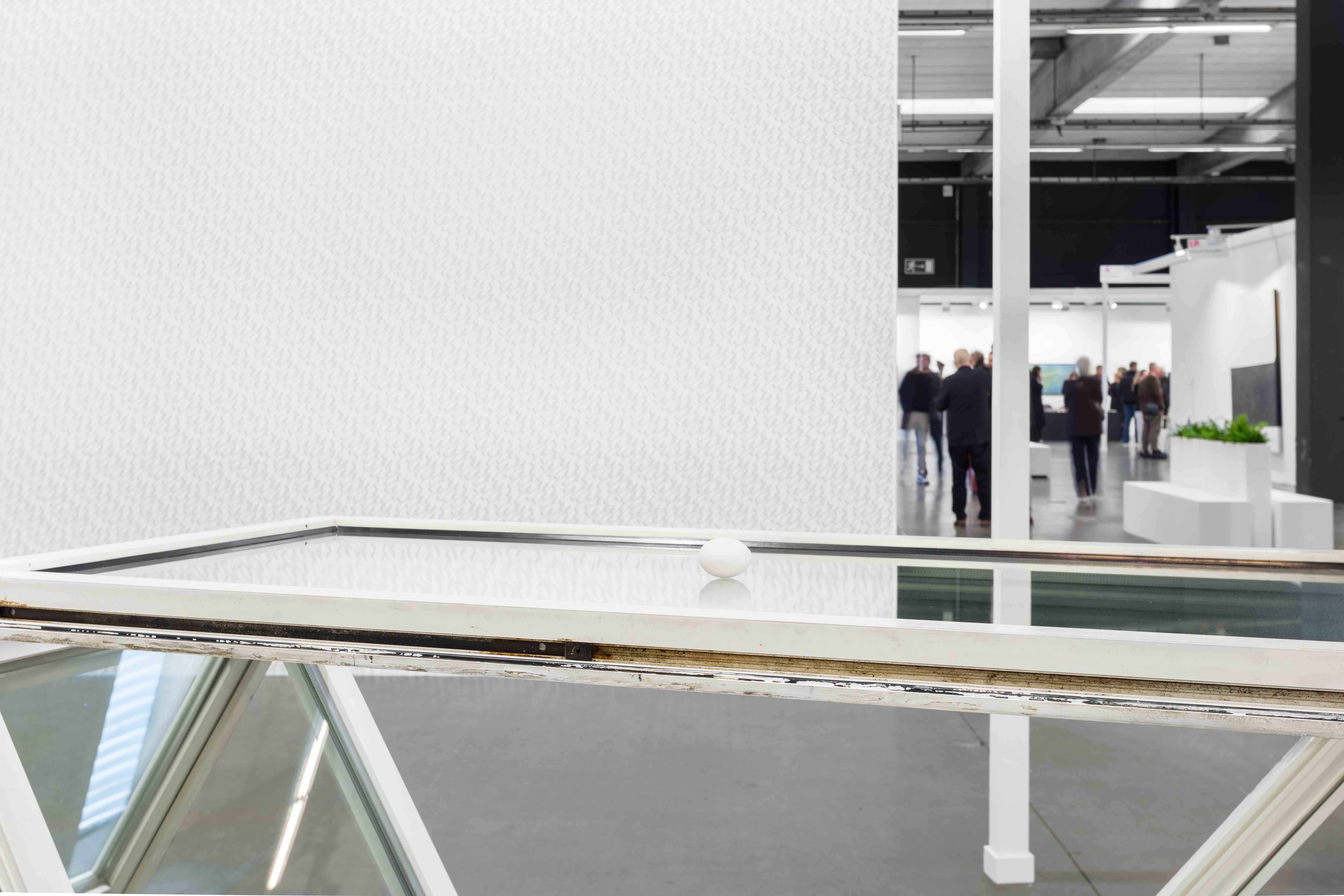

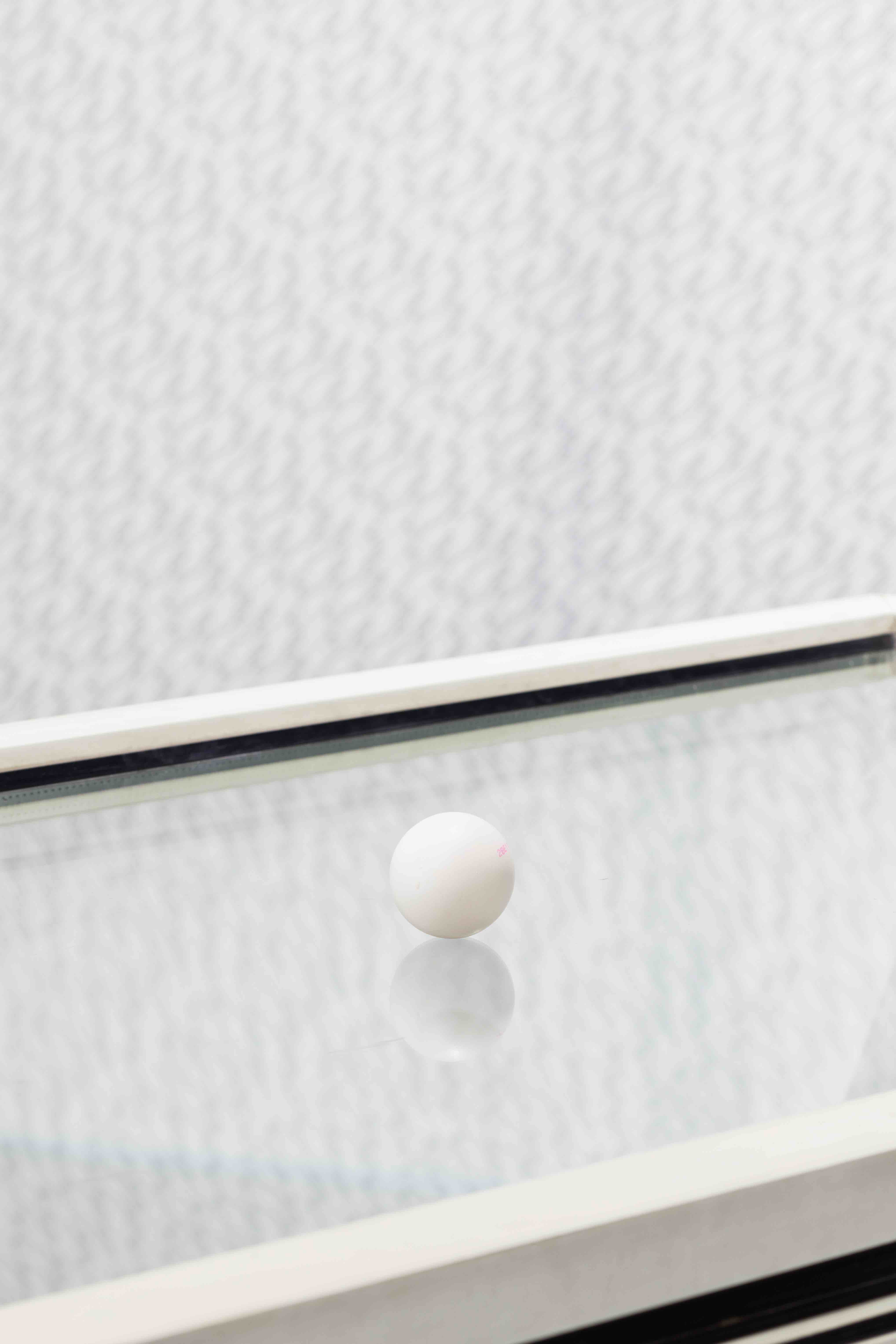
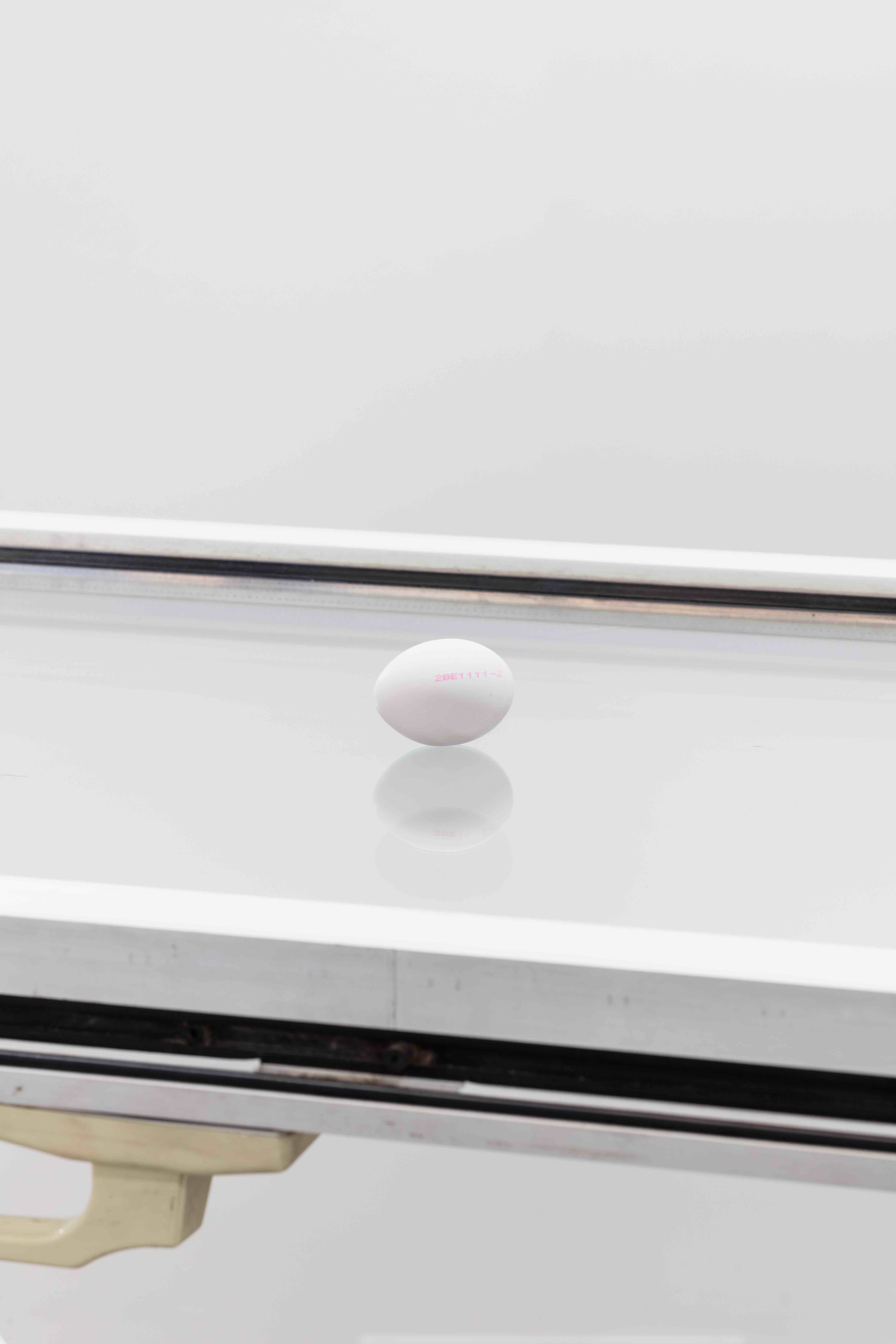
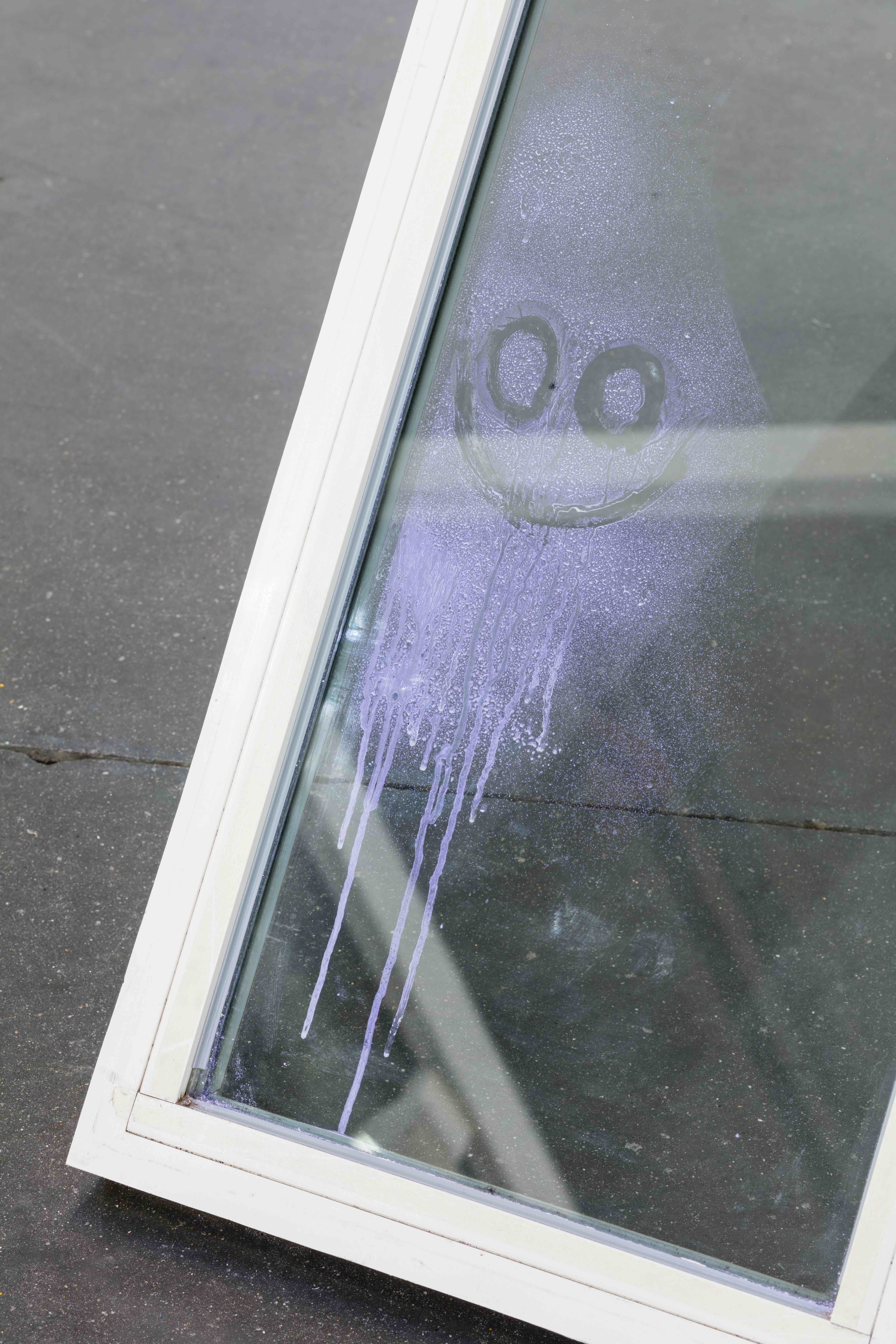




(c) Silvia Cappellari
︎ TEXT
‘Caught between the past and the here and now, as if between history and its cry, between west and east, between dying and not dying, between the experienced and the spoken … Then, brought to grasp the inscription of times and forces, the generation of the formulations and the negations, the void and its action, the enormous and yet tiny token in play with its figures and citations…’[1]
‘A beautiful surface that is appealing and charming to man masks either an “interior” that is mechanical or an “outside” that is deceitful.’ [2]
Daily Idylls sets up a series of relationships between domestic and bureaucratic productions subsumed under stereotypes of femininity. The symbolism of these blind windows and these disarticulated structures—with the way they play with scale and with their disturbed polarities—evokes the tensions at work between interiority and exteriority, between mutations and the status quo. The notion of the idyll that is at work here is a lure, alluding to the box opened by Pandora, in which woman and the fetish object are made one. The works on show evoke at once the threat of artifice and the performative power of the breach.
The project, which has been specially conceived for the Fédération Wallonie-Bruxelles booth at Art Artwerp, sets up an encounter between two Brussels-based artists: Aleksandra Chaushova, born in 1985 in Sofia, Bulgaria, and Zinaïda Tchelidze, born in 1982 in Tbilissi, Georgia. Chaushova’s and Tchelidze’s artistic practices have been impacted both by the economic and political contexts of their countries of origin and by their respective experiences of leaving in order not to return. The idea of transition, a plural notion, at once historical concept, collective phenomenon, and personal experience, turns out to be a recurrent source of investigation in both their practices. For both of them, cultural projections and allotted alterity are constant themes. Their works explore the material of the links that are made between gazes as well as the psychological density concealed beneath political rituals. They immerse us in the dense layers and contradictions of a transition that seems to stumble over its promised horizon, haunted by its own reflection.
Daily Idylls turns specifically around their shared interest in industrial objects and the way these are involved in symbolic economies, in particular the fantasmatic role they play in post-communist political imaginaries. A motor of postmodern culture, these apparently trivial objects are manipulated, scrutanised, in order to dismantle their meaning, status, and value, as well as the way they circulate and the uses they are put to. Their communicating works pursue the hypothesis of a ‘social life of things’, in which the traditions of appropriation and expressive gesture compete with one another, like so many feigned withdrawals from the triviality of the everyday. Beneath the mute face of these utilitarian objects—found objects for Zinaïda Tchelidze, reproduced objects for Aleksandra Chaushova—emerges the outline of an underlying historical trajectory for these two subjects. They ask us what remains of the idyll after the end of the era of utopias.
Aleksandra Chaushova shows new drawings from her Burotica series, which she began some years ago and in which she makes portraits of office supplies, looking for an ambivalent expression of official authority. In one monumental drawing, an army of Schneider ballpoint pens has been rendered in a style reminiscent of Constructivism, standing out against a panel of wallpaper[3] marked with their Industrial Property Code. Chaushova is a proponent of chimeric figures that defy categorical separation and embrace the transgressive power of subterfuge. Here she uses anthropomorphism in order to inscribe a balance of power within the heart of production. In the window opened onto a blocked horizon, these objects, like the members of a material community, appear like silent witnesses to permanent and perpetually changing desires and networks of dependency.
Equivocality and transformation are also at the heart of Zinaïda Tchelidze’s work. Her practice essentially consists of a spatial and rhythmic back-and-forth between urban space and the space of exhibition. Here the transitory space of the booth has been used like a new conversion chamber. Tchelidze has made a new version of her recent work, House of Cards,[4] in which the play of folded and unfolded window frames evokes mechanisms of defiance. The piece reflects her interest for the streets of Brussels, which she walks with an eye out for effects of superimposed space in the reflections in the windows. These effects of cohabitation between styles and uses appear to be the trace of endlessly renewed negotiations. While House of Cards touches on notions of transparency, opacity, balance and tension, symbols of political power, the exteriority of social life, and reason, the presence of an industrially white egg contaminates their arrangement with a material reference to the interiority of the womb.
From Buroticato House of Cards, the points of contact become zones of contagion. From the fabrication of desire to the fabricated woman, they outline the architecture of a non-place where these shared illusions have been built up.
Text by Pauline Hatzigeorgiou
Translated by Jack Cox
Notes
[1] Extract of a hymn from the Rig Veda (Antique India), quoted in Julia Kristeva, Σημειωτική. Recherches pour une sémanalyse, Paris, Seuil, 1969, p. 287
[2] Laura Mulvey, Fetishism and Curiosity, Indiana, Indiana University Press, 1996, p. 55
[3] Aleksandra Chaushova's installation was realized with the technical support of Masureel
[4] The first version of House of Cards was conceived for the context of the exhibition Parking Me with Mona Filleul and Fabrice Schneider, SB34 Clovis, Brussels, 28.4-4.6.2022.
︎ LIST OF WORKS
︎ Aleksandra Chaushova, Burotica - Schneider refill ballpoint pens, 2022
Oil pastel on paper,drawing 212x330cm
︎ Aleksandra Chaushova, Burotica - Schneider refill ballpoint pens, 2022
Wallpaper
︎ Zinaïda Tchelidze, House of cards, 2022
Old windows from the artist’s house, egg

Found archive photo, dated on the back in 1969
︎ TEAM
Daily Idylls
Aleksandra Chaushova & Zinaïda Tchelidze
Curator - Pauline Hatzigeorgiou / SB34
Assistant curator and mediator - Joséphine Wagnier
Mediator - Daniel De Decker
Graphic identity - Matthieu Michaut & Raphaëlle Lasausse
Translator – Jack Cox
︎ ARTISTS BIOS
ALEKSANDRA CHAUSHOVA (born in 1985 in Sofia, Bulgaria) lives and works in Brussels. After a Masters in engraving in Sofia, she obtained a Masters from the Académie royale des Beaux-Arts de Bruxelles in 2012, then a Doctorate in partnership with ULB and the school of visual arts, La Cambre, where she currently teaches in the drawing department. Her work often takes its starting point from archives and documents, including representations in the press, architectural archives, interviews that she conducts herself, and, more recently, patents. She uses drawing for the way it can subvert the conventions that determine a document as such, in a parasitising gesture where real documents get mixed up with her own drawings. Her recent work interrogates the themes of power, production, and economy.
In her work, she often explores the feeling of underlying, hidden disquiet accompanying images. Her work has been exhibited at La Centrale, Brussels (2021, BXL Universel II), Centre de la Gravure et de l’Image imprimée, La Louvière (2021, Bye-bye His-Story), Musée M, Louvain (2021, The Constant Glitch and 2019, Burotica – solo exhibition), Maison d’art actuel des Chartreux (2019, The Perfect Kiss – solo exhibition, following a grant and residency from COCOF), and Wiels (2013, ReSiDuE). Among other grants, she has been awarded the Bourse de la Vocation belge (2015) and an Aide à la creation grant (COCOF 2020).
ZINAÏDA TCHELIDZE (born in 1982 in Tbilissi, Georgia) lives and works in Brussels. She obtained a Masters in Visual Arts, engraving, and AESP from the Académie royale des beaux-arts de Bruxelles in 2008. Zinaïda Tchelidze’s creative process consists in entering into a specific site and judiciously choosing from amongst a range of materials (found or hand-made objects) with the aim of producing an artistic commentary on a subject that has previously caught her attention. Instead of the classic artistic approach of mastering a particular medium or technique in order to use it to represent a subject, Zinaïda Tchelidze first approaches her subject through a working methodology and a process from which her choice of material and medium only emerges later on.
Her work has been exhibited in SB34-Clovis, Brussels (2022, Parking Me), Het Paviljoen, Gand (2021, Cuttings – solo exhibition), Morpho, Antwerp (2021, Ons dagelyksch brood – solo exhibition), Galerie Rivoli, Brussels (2019, Les choses d’ici-bas and 2020, Le Complexe de Rivoli), Vanderborght Building, Brussels (2019, Fried Patterns/Generation Brussels, Brussels Gallery Weekend), La Centrale, Brussels (2019, Transhumance), World Trade Center, Brussels (2018, Flat Library – solo exhibtion), Le Sceptre, Brussels (2017, The Sun in our Window).
︎ From Thursday Dec. 15 until Sunday Dec. 18, 2022
︎ Opening day (by invitation) Thursday December 15 – Preview from 11am to 4pm; Vernissage from 4pm to 9pm (in presence of the artists and curator)
︎ Public days Fri. 13, Sat. 14 & Sun. from 11am to 7pm
Produced by Fédération Wallonie-Bruxelles

